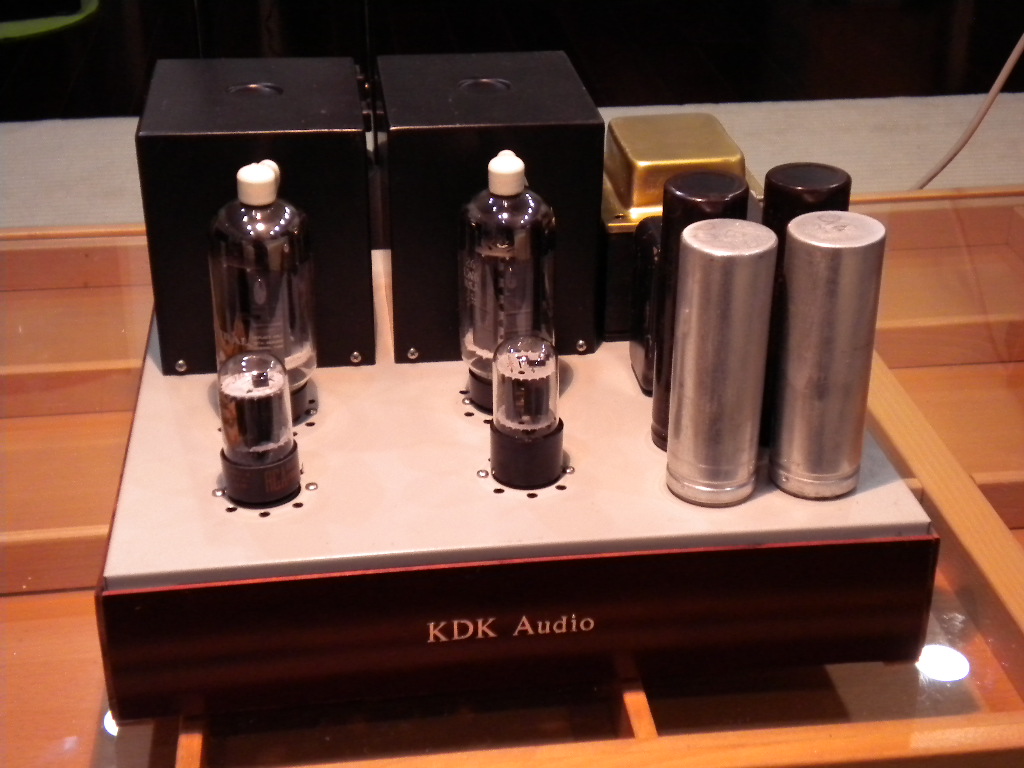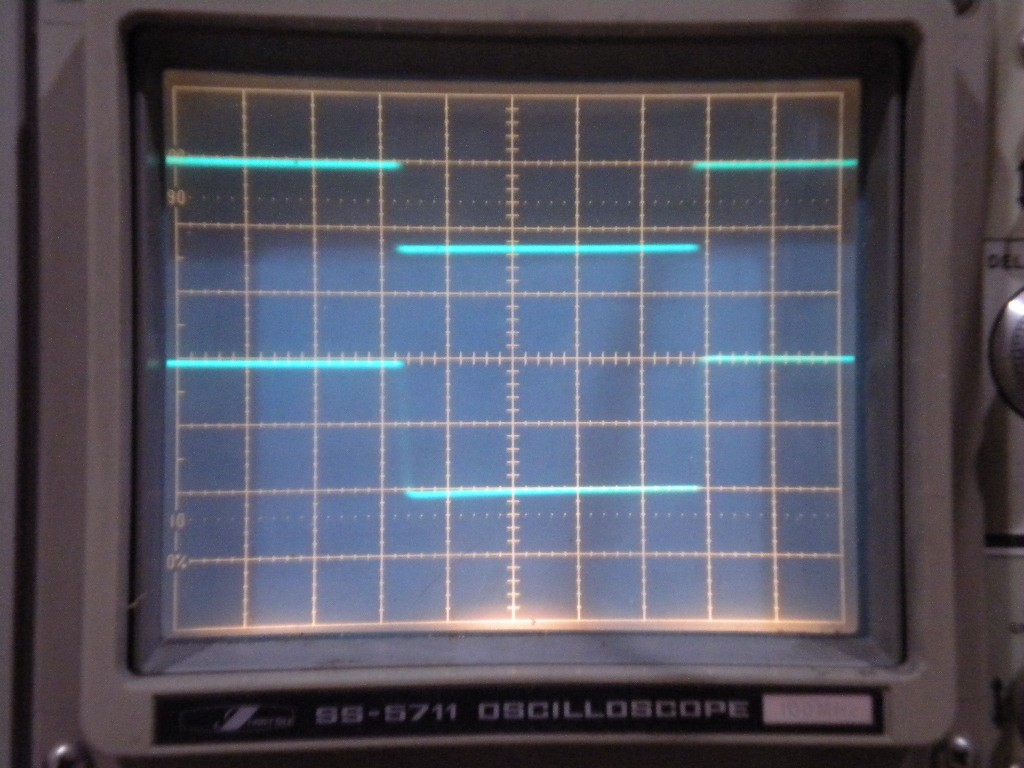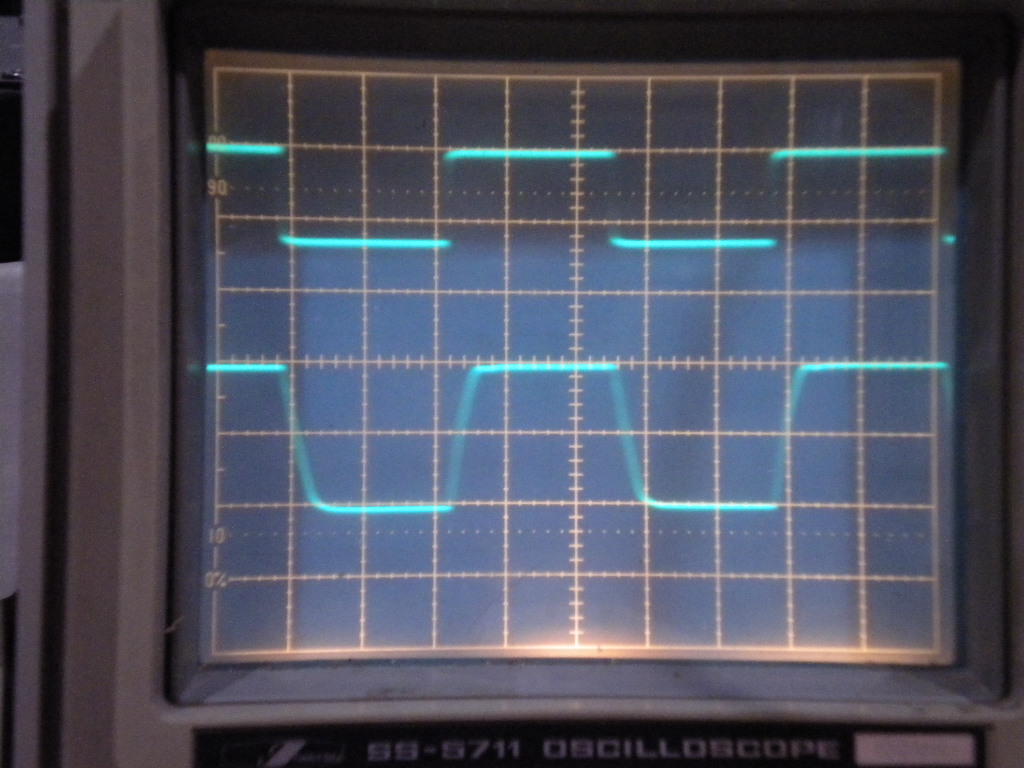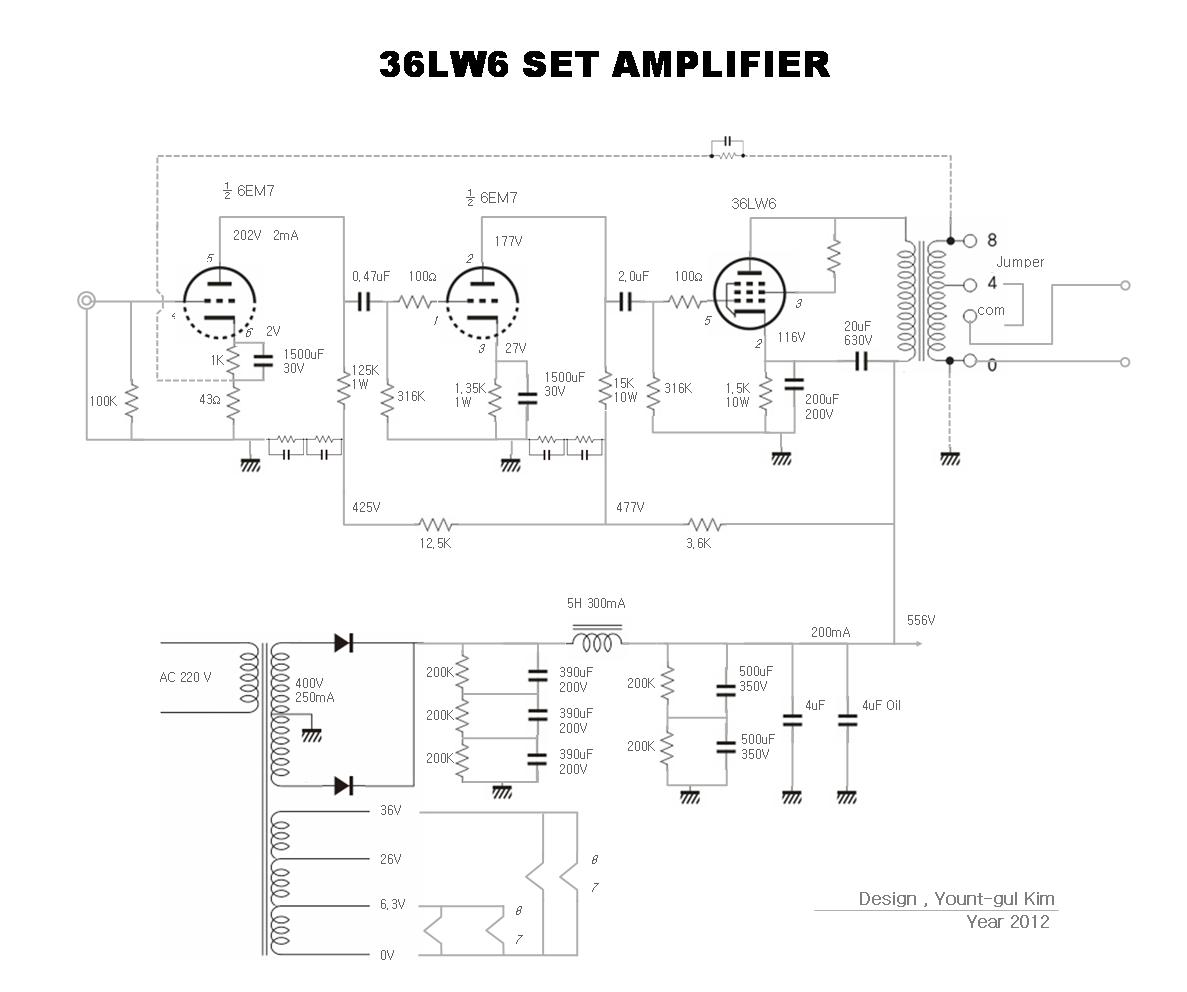Building a SET Amplifier with Color TV Tube 36LW6:
A Poor man’s 300B SET that outperforms original it replaces.
Prologue
I am not sure exactly since when the single ended triode amplifier became so fashionable among audiophiles, especially for DIY’s in US. I had a number of old Japanese magazines (Musen To Jikken) of late sixties and early seventies, which is populated with construction articles for building single ended triode amplifier employing tubes such as 300B, 2A3, 45, etc, etc, and also some European tubes such as DA30. Back then in US, as far as I could remember, and at least in the established audio market, virtually all tube amplifiers were push-pulls, including such classic amplifier as McIntosh, Maranz, Herman-Kardan, Conard Johnson, and Audio Research, to name a few.
I surmise that it was much later than the time when Mr. Nobu Shishido published 300B SET article on 1997 Glass Audio (Vol.9, No.3). I am not in the mood for discussing pros and cons of SET vs. PP amplifier, not to mention on tube sound vs. that of transistor, on which one can find tons and tons in the net. Nonetheless, I want to make just a couple of points why DHT SET sounds so good. It is my belief that they sound good not because they equipped with a directly heated cathodes, but because they possess quite linear plate characteristic. In other words, the “DH” factor is irrelevant. Another factor that contributes their good reputation is the fact that it exhibits relatively low plate resistance, some 800 ohms for the case of 300B. Therefore, I thought, if one can find a tube with good linearity and low plate resistance, one can build pretty good SETA that sound as good as 300B or even better.
Yes, I can easily expect a lot of counter arguments from aficionados of 300B SETA. However, I simply cannot find any reason that the electrons emitted from filament would be any different from those emitted from indirectly heated cathode with monatomic layer coating for higher efficiency. This line of reasoning guided me to a conclusion that all that matters is plate characteristics of the tube, which would determine the characteristics of sounds.
Another factor that compelled me to look other possibilities is the crazily high price of those DHT tubes. As the supply of those DHTs including 300B made by original manufacturer basically being evaporated, number of SET mania turn their eye to its substitute: some transmitting tubes such as 808, 805, 100TH, etc, etc, which is not intended for audio use. Now, even these tubes become very expensive and are in short supply. In this situation, I compelled to take other avenues that can satisfy my thirsty on good sounds and urge of building a good tube amplifier.
A few months ago, when I received an email from one my good friend, Dr. K.D. Kang, that contains a plate characteristic of triode connected 36LW6 tubes, I was ecstatic and really excited about the fact that this excellent tube exhibits highly linear plate characteristics with much wider useful voltage and current ranges. Developed at time of the pinnacle of tube technologies, these are great tubes, which can easily withstands considerable amount of abuse. I have read, in the Net, that one can construct a 150W push-pull amplifier with two of these tubes, a far away out-performance than the popular KT88/6550.
In his email, Dr. Kang also drew a load line, which suggested that it could pull out almost 15 watts with plate efficiency close to 40% in triode mode! When I received a pair of 36LW6 tubes from him, I cannot wait too long to build a simplest possible SETA with them.
Upon completion of hastily built 36LW6 SETA, I was surprised both for its good sound as well as its other merits such as high plate efficiency and low output resistance. This amplifier accomplished over 40% plate efficiency and around 0.57 ohm of output resistance without NFB.
I still keep a set of 300B SET amplifier that I built around with some Russian or Chinese 300B using Plitron OPT, which I believe one of the excellent output transformer one can buy in North America. In my 36LW6 SET amplifier, I used a pair of OPT hand-made by myself using C core that I purchased from Alpha Core. I consider my OPT would be somewhat inferior to the Plitron, and yet, honestly, I believe my 36LW6 SETA sounds better than my 300B SETA. It can even easily drive my Martin-Logan electro-stats with enough volume.
36LW6 SET Amplifier description
I intended to make this amplifier as simple as possible and as straightforward as possible in its circuit: no SRPPs, no cathode followers: consisting of just one or two grounded cathode amplification stages in its driver. Concerning the number of amplification stages in driving circuit, I concluded that I needed at least two stages. This is due to the fact that the triode-connected 36LW6 requires around 200V pp voltage swing. This is the only drawback for this tube, although it is not an insurmountable obstacle.
The tube I chose for driver stage was a 6EM7, which also originally designed for color TV applications. It is a dual triode with a high-mu and a low-mu unit. What I particularly liked for this tube is that the plate resistance of the low-mu unit is quite low: only 750 ohm or so. This is also quite hefty tube in terms of its plate dissipation that reaches to 10 Watts.
The high-mu unit has mu of 68, more than enough to amplify 1.0 volt max input to 20V to 30V or more for driver unit, which need 100 volts peak output. Any leftover voltage gain would be utilized for NFB.
Dr. Kang had suggested 420V/93mA operating point with –100V grid bias, which would yield 15.2 Watts output for 39 Watts plate input. This could realize whopping 39% of plate efficiency. However, I preferred self-bias and due to the power supply limitations, I had to change the operating point to a lower plate input.
In my case, the OP was set at 360V/77mA with –100V bias. I obtained 11.88Watt before starting obvious distortion on sine wave that I can observe in my scope. This amounted to 27.72Watts plate input and 42.85% plate efficiency! The output resistance was measured to 0.57 ohm without NFB. Afterwards, I applied really small amount of overall NFB, 1 dB or less, which helps a bit in reducing noise level.
I do not feel that we need further elaboration on this circuit. This is so simple circuit and due to variation among tubes, each case would come up with slightly different results. Only comments I feel I must make is that these kinds of tubes tend to oscillate, and grid stopper as well as screen grid stopper resistor is a must. I have experienced 88 MHz of parasitic oscillation and severe motor-boating when I omitted screen grid stopper resistor. Other than that, any one with some experience in building SETA could come up their own design from the plate characteristics presented here in Figure 1. For this valuable information, a full credit should be rendered to Dr. K.D. Kang. Figure-2 shows completed 36LW6 amplifier. To show my appreciation to Dr. Kang, for painstakingly measuring the plate characteristics of this excellent tube, I put his logo “KDK Audio” in the front of my finished amplifier. In Figure 3, I presented square wave test results: for 100 Hz, 1 KHz and 10KHz.
For any questions on this article, please contact me through my email: kwiyungjung@hotmail.com.





 36LW6 SET Amp II
36LW6 SET Amp II
 36LW6 SET Amp I
36LW6 SET Amp I

















